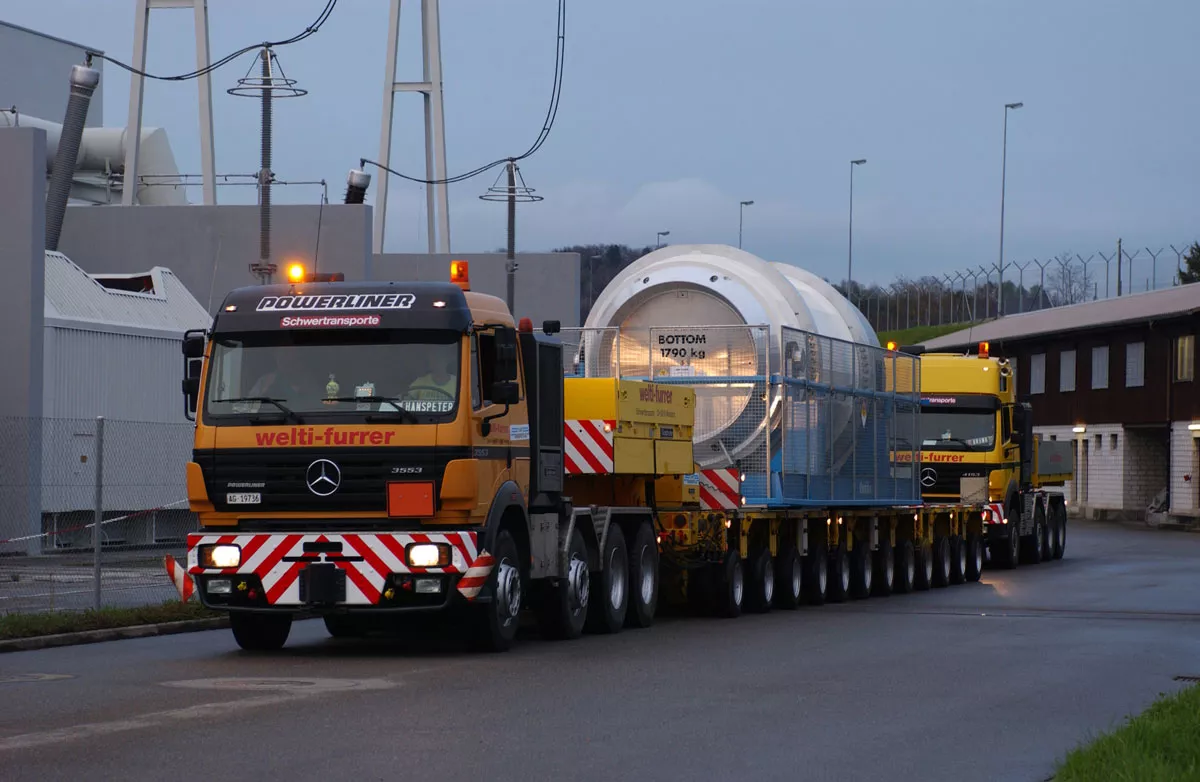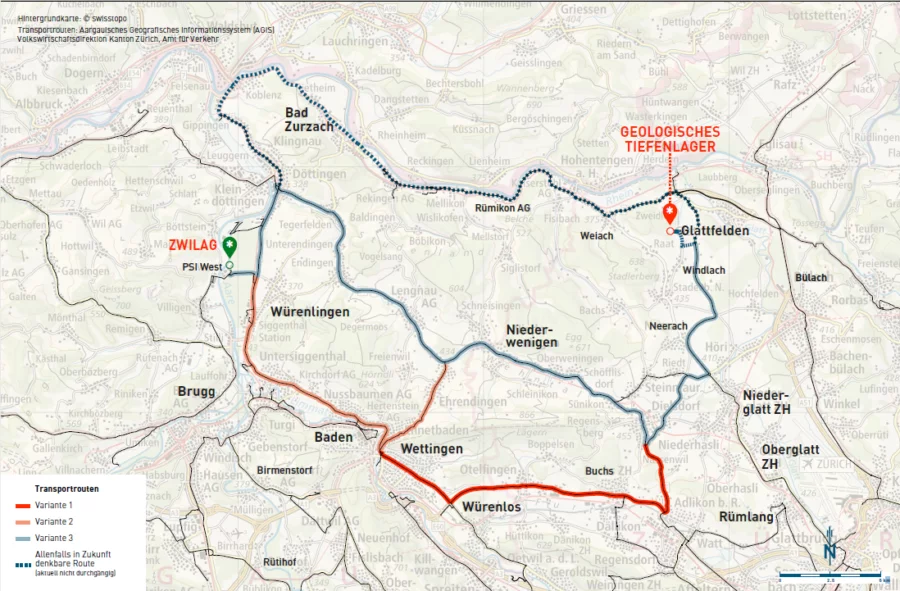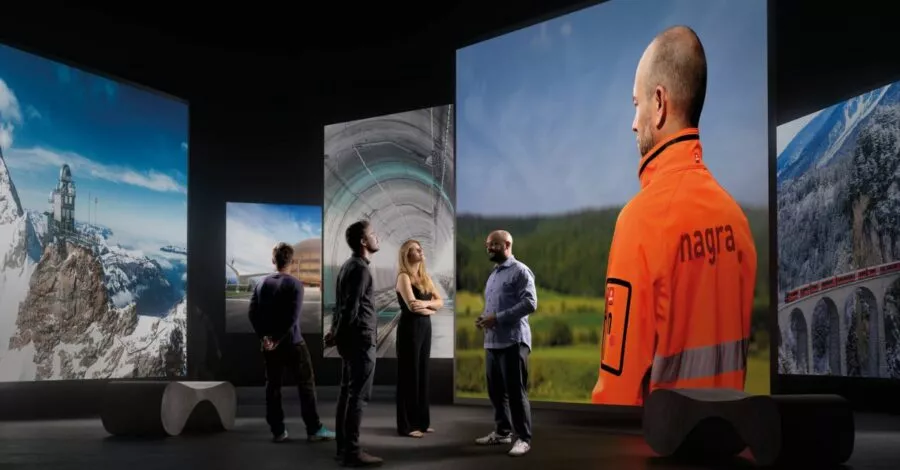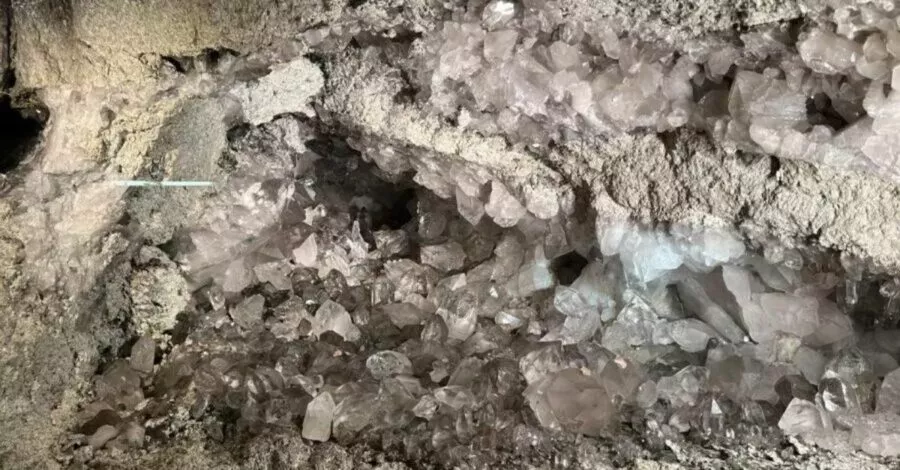
Where is the waste being held now and why does it have to be moved?
Most of Switzerland’s radioactive waste is stored in the centralised interim storage facility (Zwilag) and the Swiss Federal Interim Storage Facility in Würenlingen. From there, it will have to be transported to the deep geological repository in the community of Stadel.
How will the waste be transported?
The protection of humans and the environment has the highest priority when transporting radioactive waste. Legal requirements are strict. Transporting the waste is therefore highly complex, from both a technical and an organisational perspective. The containers have been specially designed to remain intact even in extreme accident scenarios. The hurdles for authorisation are high.
In principle, such transports have been carried out by rail and road in Switzerland and many other countries for decades. Both options are routine and safe. Neither of the two variants has a safety advantage.
For the deep geological repository in Nördlich Lägern, we favour an uninterrupted transportation of the waste by road from the Zwilag interim storage facility to the surface facility in Stadel.
There are several advantages to this option:
- Less complicated logistics: truck transports involve “loading”, “driving” and “unloading”. This means fewer handling and shunting steps than by rail.
- Existing infrastructure: two routes could already be used today. An optional third route could be made available at reasonable cost (e.g. for higher through-traffic).
- Higher flexibility: road transports do not have to consider rail schedules. Several routes are available for these transports.
- Transport by rail is more complicated and costly but offers no benefits.
While transportation by rail is possible in principle, it would require the construction of loading stations. There would also be two additional loading processes because neither the interim storage facility in Würenlingen nor the surface facility in Haberstal are directly connected to the railway network. Accordingly, the first and last stretches of the route would have to be covered by truck.
When will the transportation route be decided?
Nagra will not decide on a specific transportation route until the submission of the construction licence application (in around 2040). It will then choose the option that is the most sensible at that time, meaning that transportation via rail still remains an option.
Which routes are foreseen?
Two roads already exist that are suitable for heavy transports without the need for construction measures. A third route could be made available by making a few alterations. The route will be selected shortly before transport begins. Among other factors, this decision will depend on the general traffic and construction site situation. Trucks can also be driven at night when traffic is light.

How many transports will be needed?
Compared to the general volume of traffic, these transports will make up a small proportion.
Around three transports per day are planned for low- and intermediate-level waste. The transportation vehicles will only differ from ordinary trucks by being labelled as dangerous goods.
Between 2060 and 2075, an average of one transportation convoy per week is foreseen for the high-level waste. The police will accompany these convoys.
In summary, we are in a position to say: both options are safe and both are feasible. From today’s perspective, we favour the road because this allows more flexibility and is less complex.
Title photo: © Comet Photoshopping, Dieter Enz
Similar articles
What does Switzerland think about the deep geological repository?
Switzerland is confident that it can realise the project of the century of deep geological disposal. A recent, representative survey shows that acceptance is high across the whole of Switzerland and in the affected region.



